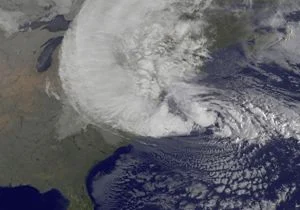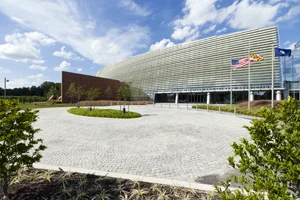Superstorm Sandy made landfall in New Jersey on October 30, 2012. It was the deadliest hurricane to hit the northeastern U.S. coast in 40 years and caused over $68 billion in damage, making it the third most expensive storm in our nation’s history after Hurricanes Katrina (2005) and Andrew (1992). Over 650,000 homes were damaged or destroyed by the storm. Storm surge reached as high as 12.5 feet at Kings Point on the western edge of Long Island Sound in New York. Superstorm Sandy is the most recent event to signal the urgency of preparing for climate-driven changes to the coastal environment.
Generations of human activity have significantly altered our planet and its atmosphere. Climate change has affected global weather patterns and exacerbated the frequency and intensity of storms. Coastal communities are becoming increasingly vulnerable to these extreme weather events due to rising sea levels, disappearing wetlands, and increasing development.
The coasts of the United States are home to over half of the nation’s population and generate nearly half of the nation’s domestic product. It is essential that the United States accelerate the national dialogue on the future of our coasts. As the international community works to limit the impending impacts of climate change, more must be done to implement adaptation and mitigation measures needed to protect our coastal communities and economic assets.
This dialogue on the future of our coasts must necessarily occur parallel to debate on federal spending and a re-evaluation of the role of the federal government. It is in this challenging context that congress delegates discussed climate change-driven impacts on the coasts and how to improve the resiliency of coastal communities — both constructed and natural. Delegates examined national and local policy imperatives, means to enhance structural and economic resilience, and the application of smart use and development to achieve a resilient coast. International experiences and approaches were also examined.
The primary goals of this meeting were to identify critical infrastructure and policies to foster coastal resilience and promote an understanding of the new economic and physical environment in which we live. Delegates had the opportunity to discuss the future of coastal management with leaders in scientific and environmental management fields.
Click Here to download the Congress Report



